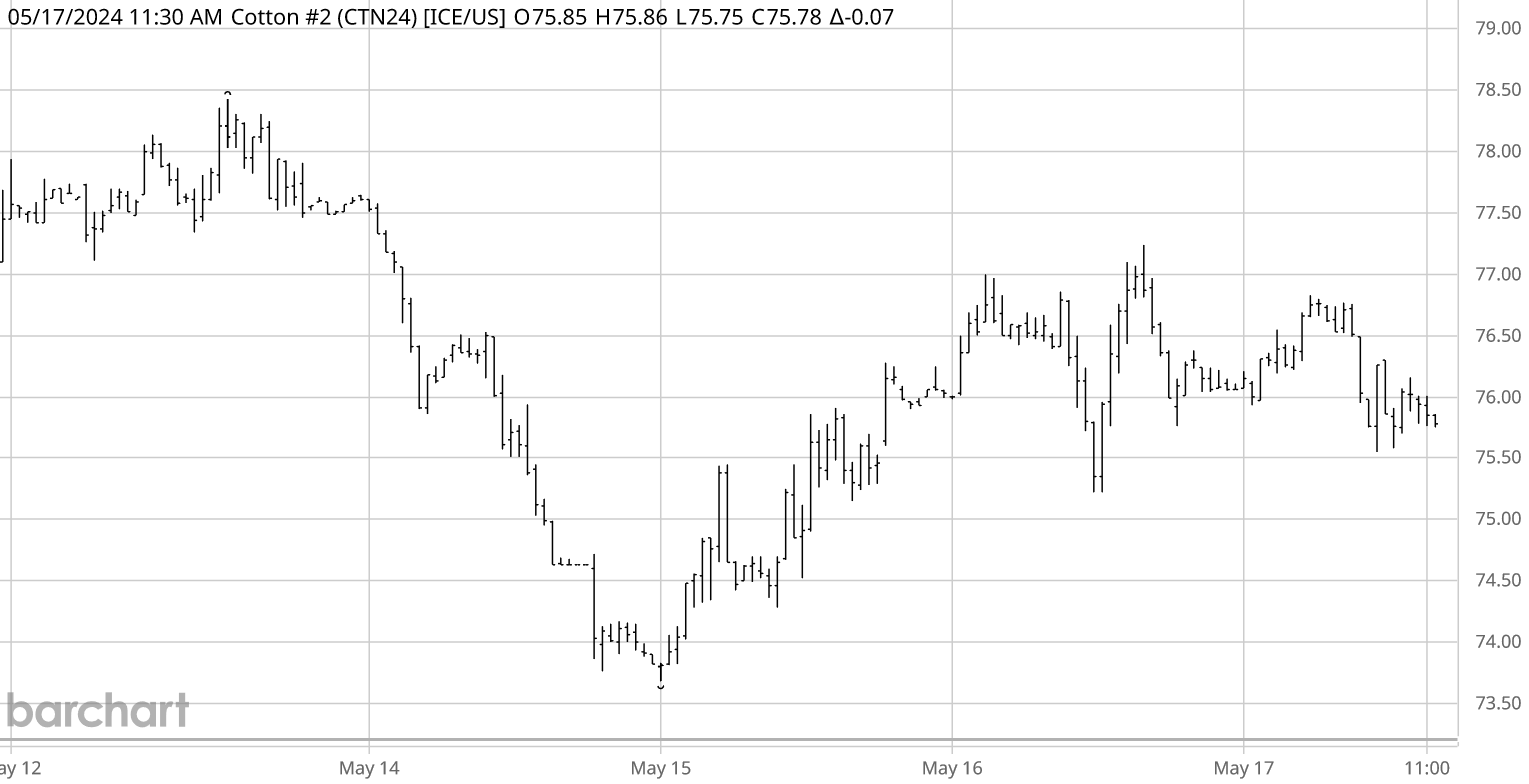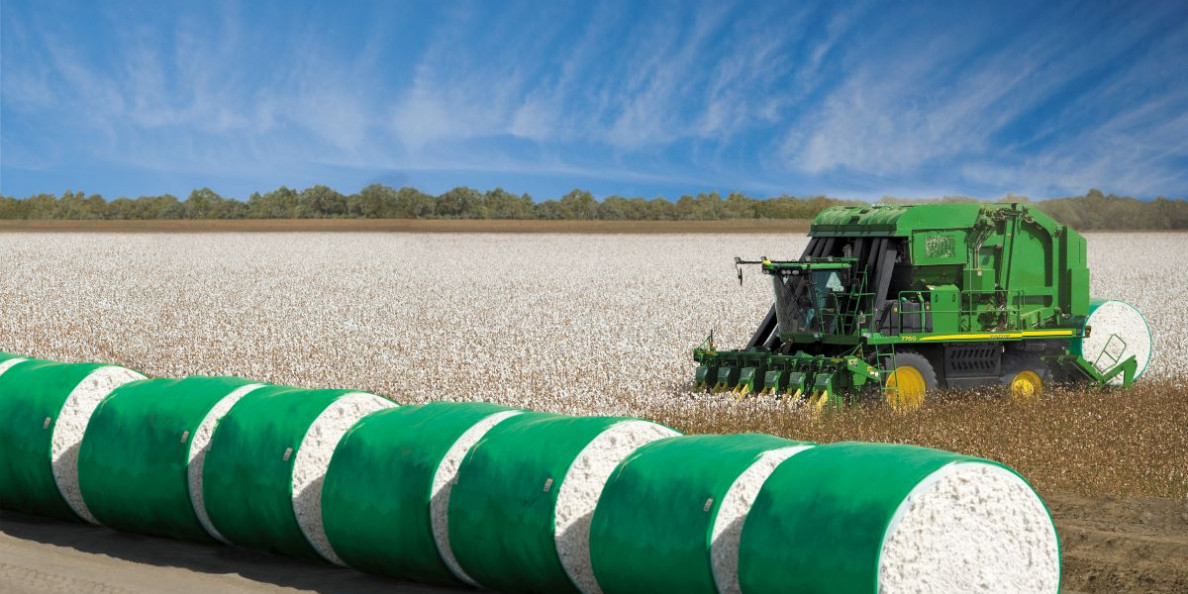For the week ending May 17, nearby cotton futures started sideways at the weekly highs, then declined to the weekly lows, then partially recovered to about the middle of a four cent range (see chart above courtesy of Barchart.com). The Jul’24 contract settled Friday at 75.89 cents per pound, while the new crop Dec’24 contract settled at 74.97 cents per pound. Chinese cotton prices and the A-Index of world prices were both flat/mixed across the week.
In other ag futures markets, old crop CBOT corn traded flat-then-lower, KC wheat traded flat-then-higher, and CBOT soybeans gyrated sideways across the week. The U.S. dollar index floated down for a touch-and-go partial recovery. Other macro influences (i.e., GDP, inflation, and interest rate policy) continued to reflect mixed expectations.

Cotton-specific influences this week included scattered rainfall over the eastern two thirds of the U.S., including continued heavy rains in southeastern Texas, and some showers in the High Plains and Rolling plains. The thirsty (in bloom) cotton region of South Texas received only scattered precipitation. This week saw lower but decent weekly U.S. export sales reported (reflecting sales through May 9). Actual export shipments were under the level needed weekly average pace. USDA’s weekly summary of the U.S. regional markets reflected inactive/slow trading of physical cotton trading activity and light to moderate demand, across the U.S. regions. Several other standard predictors of U.S. cotton demand remain bearish looking, e.g., continued rising certified stocks, as well as historically low levels of on-call sales.
ICE cotton futures open interest gradually rose for the week ending May 16. The earlier weekly (Tuesday May 14) snapshot of speculative positioning showed an increase in short positioning with a net increase of 2,652 hedge fund shorts. This was only partially balanced by 633 additional hedge fund longs and 964 contract expansion in the Index Fund net long position.
For more details and data on Old Crop and New Crop fundamentals, plus other near term influences, follow these links (or the drop-down menus above) to those sub-pages.
Source: TAMU

